One unexpected side effect of this project was that I do a little less weeding, and a little more harvesting! Below are some of the 'free food' plants in my yard.
Should you want to try this at home, here are a few common-sense guidelines:
1) Eat it only after you're SURE what it is and if it's edible. Look at different photos of the plant, or have someone who knows come check it with you. I prefer to identify it from two sources, to be sure.
2) Eat only the parts you know are edible. Just because the leaves are edible doesn't mean the seeds are. Remember the potato plant: the tubers (roots) are great, but the tops are poisonous.
3) Try a little bit first, wait a while to see if you react to it. Even if it's edible, you could be allergic to it.
4) Notice where it's growing, think about if that's a problem. Plants growing alongside busy roads will most likely have picked up extra chemicals, externally as well as internally.
With all that out of the way, for additional information on the plants, try the database at Plants For A Future and the identification handbook Common Plants of the Yard and Garden. My new favorite book is Wild Edible Plants; From Dirt to Plate, where the author, John Kallas, not only tells you what is edible, but how to prepare it.
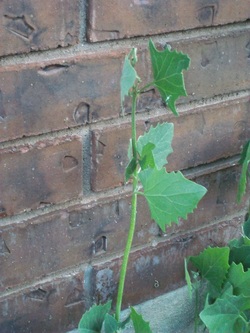
Chenopodium album L
EXCELLENT green, fresh or cooked. I like it much better than, and have stopped planting, spinach. It belongs to the same plant family as quinoa. The leaves are a little thicker, like spinach, and have a slightly lemony/sour flavor. They don't have the tiny crystalline structure that spinach has that leaves your teeth feeling gritty. Most tender and flavorful when young.
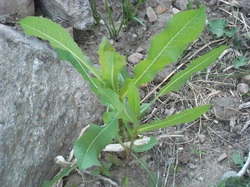
Lactuca serriola L
Both this and Sow Thistle are good if picked really young. I've eaten them in salads. Older ones are more bitter and -surprise!- prickly.
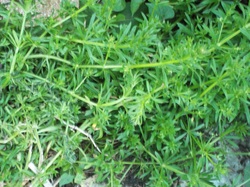
Galium aparine
An interesting feature of this plant is the tiny, Velcro-like hooks all over it. Because of these, the plant feels sticky. You DON'T want to chew this up fresh; it'll stick in your throat. It is supposed to be a very 'cleansing' plant; I make a sort of homemade liquid chlorophyll with it. I grab enough to pack into a tight softball-sized wad, then put it in the blender with about three cups of water. Blend until well pureed, then strain through cheesecloth or a doubled-up dishtowel. An ounce or two a day is plenty, unless you want cleaned out in a hurry!
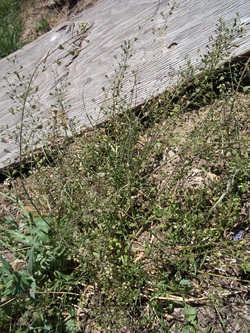
Capsella bursa-pastoris (L.)
My daughters love to nibble on the heart-shaped seed pods. Leaves are good raw or cooked, but definitely best before the plant starts to get tall. That's all I've done with the plant, though Plants For A Future lists a lot more possibilities.
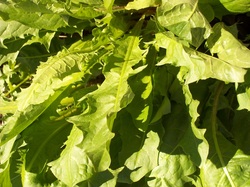
Taraxacum officinale
Oh, you knew this one would show up on my list, right? Is there a more common yard weed?
I've NEVER thought they tasted good! Apparently that's because I've been eating them plain; the old-timers who used these as an actual vegetable dish say to sauté them with onion and bacon for best results. Leaves that have been well-watered and partly shaded seem to be the least bitter.
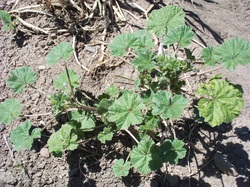
Malva neglecta
Scientific names can be hilarious! Take this one, for instance, or Tribulus terrestris(puncture vine). Anyway, I digress...
My children like the “cheesies” (round, button-shaped seeds) so much that one son transplanted some INTO his garden. All parts of this plant are edible- root, stems, leaves, and fruits (cheesies). They are pleasantly flavored, and can be used like okra to thicken things. The section on mallow, alone, in John Kallas' Wild Edible Plants is worth the price of the book!
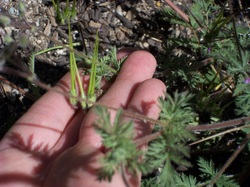
Erodium cicutarium
A couple of the common names refer to the beak-like shape of the seed pods. This is a fairly flat-growing plant, unless there are plants close by to support it. It grows in a rosette, radiating out from the center. If you rub the plant, it smells a little like parsley. It also tastes a little like parsley. :-) I love it in salads.
 RSS Feed
RSS Feed